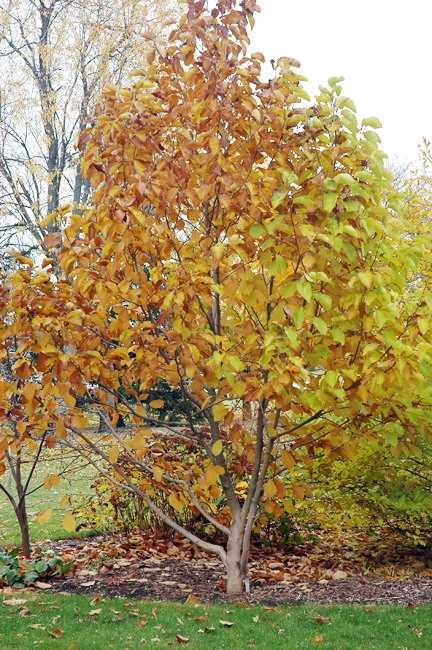Magnolia 'Elizabeth' (Elizabeth Magnolia)
Botanical Information
| Family | Magnoliaceae |
| Genus | Magnolia |
| Cultivar | 'Elizabeth' |
| Category | Woody |
| Type | Tree (deciduous) |
| Origin | Introduced in 1977 by the Brooklyn Botanic Garden, ' Elizabeth' is a selected seedling from a cross between Magnolia acuminata and M. denudata. The crosses were made in 1956 by Evamaria Sperber, former plant breeder at the Brooklyn Botanic Garden. |
| Pronunciation |
Details
| USDA Hardiness Zone | 5 |
| USDA Hardiness Ref. | |
| Canadian Hardiness Zone | 6 |
| Canada Hardiness Ref. | |
| RHS Hardiness Zone | H6 |
| RHS Hardiness Ref. | |
| Temperature (°C) | -5 |
| Temperature (°F) | 25 |
| Height | 10 m |
| Spread | 5 m |
| Growth | Fast |
| Flowering Period | April, May |
Description and Growing Information
| ID Characteristic | Creamy yellow blooms that are characteristically smaller than other varieties of Magnolia. |
| Shape | Upright spreading. |
| Landscape | As a specimen or centrepiece tree. |
| Cultivation | Grown in partial shade to full sun in well-drained acidic, organic, clay based soils. |
| Pests | Cankers, scale. |
| Notable Specimens | The A.M. Cuddy Gardens, Strathroy, Ontario, Canada. Caerhays Castle, Goran, Cornwall, United Kingdom. |
| Habitat | Horticultural origin. |
| Bark/Stem Description | Smooth glabrous bark with slightly pronounced lenticels. |
| Flower/Leaf Bud Description | Upright lanceolate flower buds that appear terminally on flowering stems, 4 - 8 cm in length. |
| Leaf Description | Simple, alternate pinnate-ovate leaves with narrowed apices. |
| Flower Description | Showy open cup-shaped blooms that point upward. Petals can measure between 4 - 8 cm in length. |
| Colour Description | Medium green to vivid green foliage in the spring to summer, which turns shades of yellow, gold and orange in autumn. Bark begins a pale brown but as it matures it turns to a darker brown, and then a dark blackish grey. Delicately pale yellow flowers that fade to cream near the centres. |
| Texture Description | Medium to coarse. |
Photographs
Magnolia ‘Elizabeth’, form. The Pascoe Residence, Strathroy, Ontario, Canada.
Magnolia acuminata 'Elizabeth', leaf. The A.M. Cuddy Gardens, Strathroy, Ontario, Canada.

Magnolia acuminata 'Elizabeth', flower. The A.M. Cuddy Gardens, Strathroy, Ontario, Canada.

Magnolia ‘Elizabeth’, form. Caerhays Castle, Goran, Cornwall, United Kingdom.
Magnolia ‘Elizabeth’, flower. Caerhays Castle, Goran, Cornwall, United Kingdom.
Awards
